Hey, you. You want to start boxing but don’t know where to start. You might even be afraid of what’s coming next.
I know how complicated everything may seem right now. But I want to assure you that you’ll start your fighting journey immediately after reading this article.
I’ve seen so many inexperienced boxers fail because they don’t know what to do. Martial arts are complicated and full of information. Thus, many beginner trainees seem to quit before experiencing the first milestone.
That’s why I have decided to write this article.
This guide will be filled with countless tips and steps you can implement today to start your boxing journey. Some will be hard, and some will be easier than others.
Likewise, if you’re already boxing, you will benefit from reading this complete guide, as it’ll cover many aspects you must work on to hone your technique and fighting approach.
Before diving in, I want to encourage you to save this article and return to it when you feel like you have finished a part or feel lost. This can be your guiding light when you want to give up or put everything aside.
If you’re interested in boxing, you’ll also enjoy reading about the complete breathing guide to boxing correctly.
This guide will be divided into 15 parts, each covering an entire area of this sport. I highly recommend following each piece as an individual skill and taking it one step at a time. If you can do that, you’ll progress much faster than those who dive into the deep waters without first learning to stroke.
So, without further ado, let’s dive in.
Part 1: What is boxing?
Boxing is, first and foremost, a martial art. It’s a sport that teaches you how to fight fiercely. That’s why you don’t mess with pro boxers.
Don’t worry; I won’t go over the entire history of boxing. However, if you want to learn all about its history, follow the link.
Returning to our matter, martial arts were created to teach people how to fight. It’s pretty interesting to see the progression of boxing throughout history. It was first used to solve arguments between people.
Think about it; you’re boxing against your neighbor for who’s responsible for the broken fence. Let’s move on.
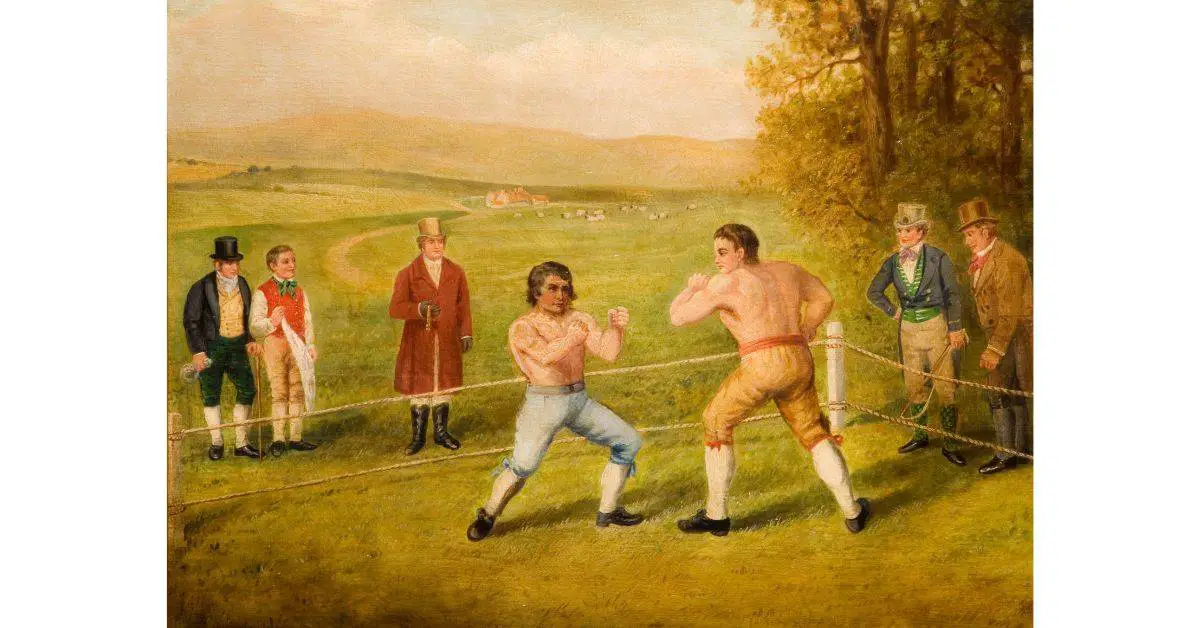
Boxing is also one of the most dangerous sports worldwide. Its injury rate is exceptionally high, at 13.3 injuries per year for male professional boxers, a respectable number.
Moreover, boxing, also known as the art of punching, uses punches as its sole fighting method. Therefore, you won’t learn how to throw a high kick. If you want to learn that, consider choosing another martial art. I wrote an article on the best martial arts with kicking techniques; follow the link to know which they are.
Practical step:
Start to think of boxing not as a hobby but as a martial art and a lifestyle. Although boxing is a hobby for some trainees, it’s much more than that for others.
Now that we know a bit about boxing, let’s move to the second part: Why should you start boxing in the first place?
Part 2: Why should you do boxing?
The benefits of boxing are plenty. You can expect both your mental and physical self to grow and improve by consistently boxing. That said, some benefits will only come once you adapt your lifestyle to the new you, the boxer you.
The following list describes the benefits of boxing:
- Better physical shape
- Better endurance
- Improved confidence
- Higher self-esteem
- Loving and appreciating yourself.
- Knowing how to fight
- Being less violent and aggressive
- Not being as stressed all the time
- Getting abs
- Loving your body
- Better mental health
- Increased testosterone
- Being stronger
- Having toned muscles
- Being mindful
- Adopting a growth mindset toward life
Okay, I think that’s enough.

The point of this part is to fuel your inner self to become eager to start boxing. In my eyes, having only a single of these benefits will change your life. For example, being more confident is a trait people have tried to improve for years; now, you can be more confident from consistent boxing training.
Doesn’t that sound good?
There’s a lot on the line. Please look forward to getting results. They’ll only come if you work hard and stay consistent.
Now that we know what’s on the line: let’s begin!
Practical step:
Think and write down everything you want to achieve in your boxing journey. Then, choose one primary goal or benefit you want to achieve.
Part 3: Starting out

By now, you should be motivated enough to start your journey. I know the road is long between you and knowing to box. However, if you look forward to training and learning the basics, you’ll get there in no time!
The first step is to choose a boxing gym. This, for many people, is the hardest step since they delay it at all costs. However, once you select a boxing gym, you want to attend; you’ll be done with the most challenging step.
But, before you attend one of the classes, it’ll be best to train at home. If you can come to your first class with the basic knowledge of how to box (parts 4, 5, 6, and 7), you’ll be more likely to enjoy training.
The hardest part will be to learn the basics. Yes, I know it doesn’t make sense. But, once you’re familiar with the basics, which are the punches, footwork, and stances, you would never want to quit.
Practical step:
Choose a boxing gym you want to start training in and select a time to attend your first boxing class.
Part 4: Stances
This is the first part we’ll actually start working on our fighting style. As I mentioned, boxing is a martial art that uses punches as the sole fighting technique.
For instance, other martial arts, such as Jiu-Jitsu, don’t teach punches but other fighting techniques. So, they’ll teach entirely different techniques and methods.
The first part you need to understand is your fighting stance. This is how you stand when you’re not throwing a punch or blocking one. Instead, it’s the position your body should return to whenever possible.
Different boxers use different stances. Some, for example, stand with their legs wider than others. This is not as important now as understanding one thing. Your stance serves you. How you stand will give you various benefits. For instance, standing with narrow feet will make you react slower and be less stable.
To start, stand up. Then, stand with both your fists in front of your face. Your weak hand should be slightly more forward than your dominant one. Likewise, your weak foot should be further away from your body.
Your knees should be tucked in, and your feet in about shoulder distance. Play around with your feet to see what’s most comfortable for you. Your dominant feet also need to have a slight angle.
Here’s how it should look:
Practical step:
Stand up and move into your boxing stance. Place your feet and hands where they should be. Play around with your body to see which position feels most comfortable for you. Then, return to a normal standing position and your fighting stance again.
Repeat this step until you’re comfortable getting into your fighting stance from a normal standing position quickly
Part 5: Punches
There are 4 types of punches: jab, cross, hook, and uppercut. Now that you know how to get into a proper fighting stance, it’s time we dive into the offensive techniques. This, perhaps, is one of the essential parts of this guide, so read carefully.
Let’s first discuss the jab. The jab is a punch you throw with your weak hand (the hand that’s a bit more forward). It’s a quick punch that usually doesn’t cause as much damage, as you’re not generating a lot of momentum with your body.
When throwing the jab, it’ll be best if you can step forward to generate more momentum and force with it.
This is how you perform the jab:
Next up, we have the cross. The cross is a punch you throw with your dominant hand; it can cause more damage than the jab since you use your hips and other body parts to generate more momentum.
This is how you perform the cross:
Next up is the hook; the hook is a punch you’ll see many boxers use to finish a fight. You can generate the most force with this and the uppercut. The hook is a punch that uses an angle to hit the opponent’s side.
This can either be the side of the opponent’s head or body; both will be solid hits.
This is how you throw a hook:
And now, lastly, the uppercut. The uppercut is a punch similar to the hook, but it generates force laterally and not horizontally. Therefore, when throwing the uppercut, you typically want to aim for the opponent’s chin.
This is how you throw an uppercut:
Practical step:
Practice all 4 punches. Get comfortable with them. Practice the jab, cross, hook, and uppercut. Once it feels more natural to throw them without thinking, continue to the next part.
Part 6: Footwork
Proper footwork is key to both your offensive and defensive games. When examining the offensive game, you can generate more force with all your punches.
The boxer who throws a cross without pivoting his feet won’t be able to generate as much force as the other boxer who does.
Likewise, the force you generate will significantly diminish if you throw a jab without stepping into the punch or using your hips.
The same applies to your defensive skills. If you can use footwork to dodge, avoid, or block hits, you’ll be less prone to get hit in the face and thus, win more often.
Getting hit is something you should avoid at all costs. So, if you cross your feet when moving, you’ll be off-balance more often, making you an easier target to hit.
There are two footwork drills I want you to practice in this part:
- step and punch
- step, punch, and pivot
These two will help you understand how to throw a proper punch. Moreover, they’ll help you know how to avoid a hit from the opponent’s side. When these two drills feel more natural, your boxing skills will significantly improve.
Simple but effective. Here’s how it’s done.
Step and punch
First, the step and punch; this is the simplest drill. You begin to move with your feet without ever crossing them. If you do, you’ll be more likely to get hit right in the face. Now, when you move one step forward, you want to throw a punch with the same side you first moved with your feet.
So, if you moved with your right foot first, you throw a cross. Then, if you did with your left foot, you throw a jab.
Step, punch, and pivot
Pivot is one of the most critical techniques you should learn to hone your boxing skills. Once you’re comfortable with the step and punch, you can move on to the step, punch, and pivot.
The pivot is a defensive footwork move. This is the only part of this article that’ll examine defensive techniques, so pay attention. Likewise, you can use it as an offensive means.
To execute the pivot, you move your back foot behind you while turning (and not lifting) your right foot.
You can do the same with your right side. Although much harder, you can practice it. It might be more intuitive to lift your right foot and do the same. But, your left foot should lead the motion; again, without lifting the right foot – only pivoting it.
Practical step:
Practice the step and punch – and the step, punch, and pivot. Once you feel comfortable executing both these drills, move on to the next chapter.
Part 7: Combinations
Combinations in boxing are perhaps one of the more essential skills to master. They help us cause more damage to the opponent.
Imagine throwing just one punch at a time; how do you think you would look? Frankly, you would look silly. Boxing is about momentum and causing the most damage in the least amount of time.
Thus, it’ll be best to throw a few punches that combine together when you go offensive. These are combinations. Now, combinations aren’t 3 random punches that come one after another. Instead, these are punches that are connected; this, it’ll feel more natural throwing them one after another.
A bad example of a combination is a cross followed by a jab. Try to throw it right now and see how weird it feels. Then, you have to step back to throw a jab after the cross.
But, when you throw a jab followed by a cross, you’ll be more likely to hit both. Try it right now. You’re capable of throwing both punches without moving or pivoting. That’s why it’s one of the most fundamental combinations out there.
- jab, cross
- jab, cross, left hook
- jab, right hook
- jab, cross, jab, jab, cross
- jab, cross, jab, right hook
These are the 5 combinations we’ll discuss in this part. Before moving on to the next part, make sure to get comfortable combining your punches.
By the way, this is the last practical part of this complete guide. Before you move on to part 8, I want to encourage you to practice everything you have learned thus far. Once you move on, you should already have a solid foundation to attend your first boxing class.
Jab, cross
The jab followed by a cross is the most common combination in boxing. As a result, you’ll see many professional boxers use it in their fights, as they know its effectiveness.
To perform the jab, cross, also known as 1-2, you throw a jab and follow it up with a cross. You should pivot your hips on the cross more than on the jab.
Jab, cross, left hook
If you can land all 3 punches, hence the jab, cross, followed by hook, you’ll cause massive damage to the opponent.
The combination starts the same as the 1-2, or the jab, cross. But you’ll add the left hook at the end of the combination, making you capable of causing more damage.
Jab, cross, jab, jab, cross
In the following combination, we have the jab, cross, jab, jab, cross. While it may sound simple, it’s one of the most influential and impressive combinations you can throw.
The 3rd and 4th jabs should speed up the pace of the combination. For example, listening to the rhythm you create by performing the combination will be faster in the middle part.
Try it out for yourself! Of course, make sure to keep the footwork with proper technique.
Jab, cross, jab, right hook
Our last combination is one I love to use in training and spars. When you land it, your opponent will not know what’s come up to him.
You first start with a standard 1-2. Then, you follow it up with a jab and a right hook. Make sure to keep the same rhythm when throwing the combination. Likewise, pay extra attention to what we learned in the footwork chapter.
Don’t start speeding up the training before you’re not ready. If you do, you’ll only end up worse than where you started. Instead, keep your boxing technique perfect.
Practical step:
Perfect two combinations, the 1-2 and the 1-2 left hook. Once you feel comfortable throwing the two combinations while keeping your technique perfect, you can move on to the next part.
This last chapter discusses actual hands and feet techniques you should know before your first boxing class. So now, you can be sure you’ll know the basic stuff and not fall behind.
But I do want to encourage you to keep reading. There are 8 more parts about optimization and tips on staying consistent. While most won’t be directly related to the actual hands and feet techniques, they’re critical to know and understand for your long-term progression.
Part 8: Endurance & Exercise
All boxers need to be in top shape all the time. That especially applies to those who desire to become professional or amateur boxers.
However, improving your endurance is hard to do only by boxing. That’s why you must optimize your training routine also to improve your endurance and aerobic shape.
So, how do you do that?
You improve your endurance by participating in cardio or HIIT workouts. Examples of these are swimming, running, rope jumping, and home HIIT workout.
You’ll never be able to withstand 12 rounds of vigorous boxing if your endurance isn’t up there. That’s why you should incorporate such exercises into your weekly training routine.
Practical step:
Figure out which aerobic exercises you enjoy most. Choose one that will suit your training routine and incorporate it there. Next, start working on your endurance; slowly but surely, you’ll be able to withstand more boxing rounds.
Part 9: Footwork + Punches
There’s an essential part you should work on more in your boxing journey. Unfortunately, that’s something some boxers seem to neglect and pay for later.
Combining footwork and punches isn’t an intuitive motion. Instead, it’s an easy skill to neglect, as it isn’t as shiny as working on your punches.
However, combining footwork with your punches—can tremendously improve your boxing skills. Not only will you improve your power, but you’ll also put yourself in a better position. That means that you’ll be able to avoid more hits as you’ll be moving actively.
So, how do you combine footwork with your punches?
The easy way you can do that is to step forward when punching. Try that right now. See how that affects your technique. And, when you’re stepping forward and backward, you’ll be more capable of avoiding the opponent’s hit.
Practical step:
Start incorporating footwork with your punches. Don’t hesitate to take it slowly at first. However, you’ll notice how you’re capable of generating more force with your punches with time and practice.
Part 10: Correct breathing
You should already be working on your endurance. However, there’s another thing you can do to withstand more rounds inside the ring; correct breathing.
This is how you do it:
You should exhale every single time you throw a punch, a combination, or block a hit. Moreover, try to inhale as much as possible in between encounters. You’ll be able to withstand more rounds inside the boxing ring if you do that.

Boxers who know how to breathe correctly during a fight or a spar are more likely to perform at their best.
Nevertheless, if you won’t fill your body with enough oxygen, you won’t perform at nearly the performance you could have if you were to work on your breathing.
Although breathing work isn’t that exciting, you can begin to incorporate it in fun ways. For instance, start working on your breathing the next time you work the heavy bag.
Practical step:
Start to exhale whenever you throw a punch or a combination. Likewise, exhale when you get hit. Start making correct breathing a habit, and you’ll see results.
Part 11: Optimizing your training routine
This part will discuss what you need to know about optimizing your training routine. Some claim you must hire a coach, but that shouldn’t be the case for many boxers.
Boxing without a coach is possible, but you’ll need to remain a lifelong student. I’ve been training for about 7 years and know how to build a solid training routine.
That said, I still have a lot to learn, and I do every single day. That’s why I can remain in top shape all year long.
That’s what you need to know about building your own training routine: don’t work the same muscles on consecutive days. This has been the guideline I followed for all my fitness years, and it worked well.
According to a medical article, your muscles need at least 48 hours to recover and rebuild before you can hit them again to avoid injury and fitness plateaus.
Avoiding overtraining should be your number one priority. If your muscles can’t keep up with your training routine, you’ll make them more and more fatigued. With time, you’ll slow down your progression rate, and, you might even cause permanent damage.
Practical step:
Remain a lifelong student regarding fitness. Consult with someone you know who understands a thing or two about fitness and build your training routine. This should include boxing, strength training, and some cardio exercise.
Part 12: Training at home
This part is, without a doubt, my favorite. By now, you probably know how to throw a powerful punch. But, it’s time to take your training to the next level, training alone at home.
I believe that you won’t be able to progress as much if you don’t have the means of training at home, whenever you want. This can even be to release aggression and build tension whenever you feel like you have to.
Boxing at home—doesn’t have to be as hard or money-consuming. Rather, all it takes is a single, cheap punching bag and gloves purchase. So if you’re willing to do that, you’ll start to box at home soon!
Jayefo Sports Punching Bag

This is the punching bag I encourage you to buy. If you want to start boxing at home and progressing soon, consider buying it.
Everlast Elite Pro Style Training Gloves
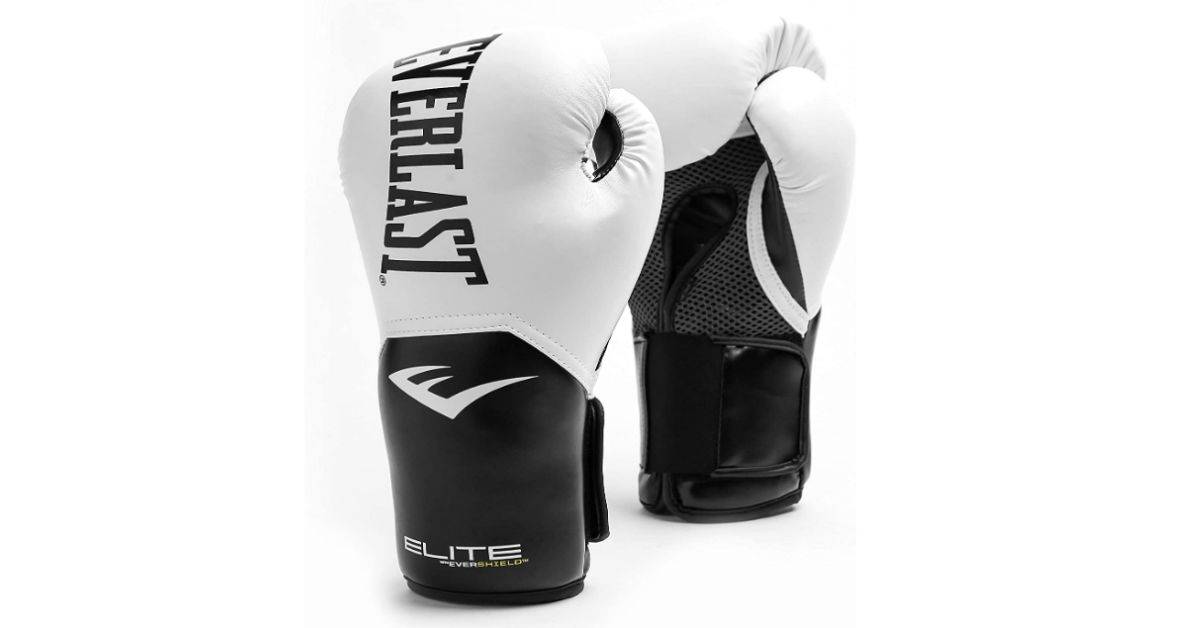
Protecting your hands should be at the top of your priority list. Hand injuries are one of the most common injuries in boxing. Therefore, if training at home is one of your goals, consider buying these gloves.
RDX Boxing Hand Wraps
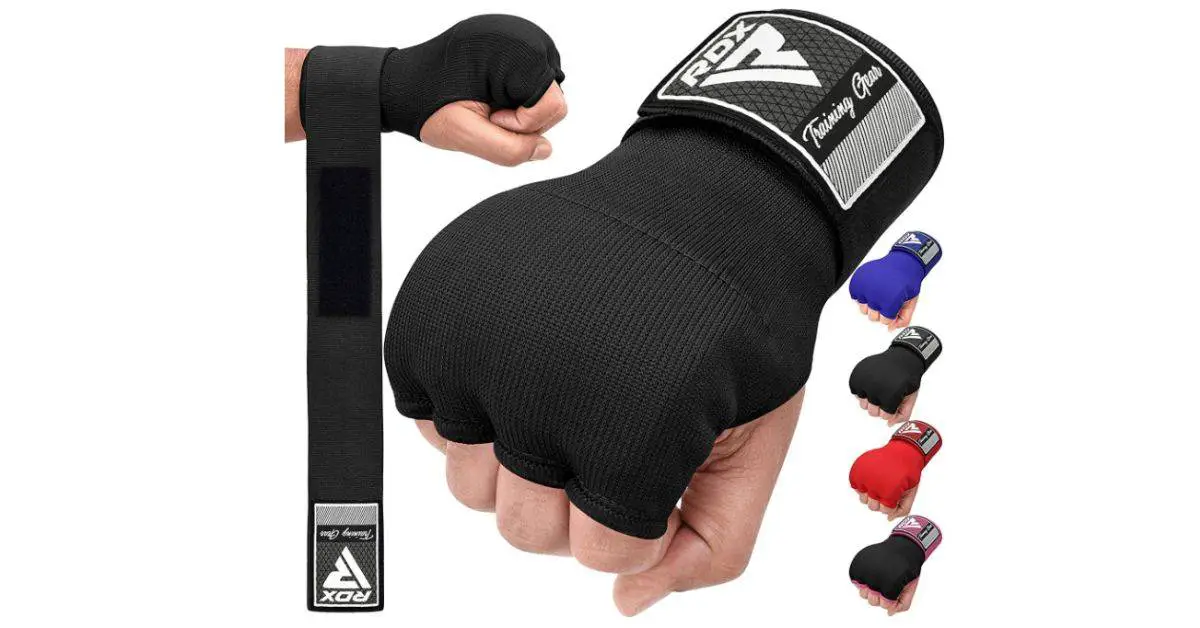
As I mentioned, hand injuries are among the most common ones in boxing. As such, protecting them should be at the top of your priority list.
Wearing both hands wraps and boxing gloves—is mandatory if you’re interested in keeping yourself healthy.
Follow the link if you’re interested in learning more about protecting your joints in boxing.
Practical step:
Consider buying the boxing equipment I listed to start training at home. Doing so will help you learn and progress faster. However, if you’re unwilling to spend money on boxing equipment, consider shadowboxing at home; it’s free!
Part 13: Tips to progress faster
Progressing faster means learning more in a shorter period. That’s why boxers with huge egos can’t go as quickly since they think they know it all.
However, that’s rarely the case. So unless you’ve been boxing for numerous years and competing in the pro scene, you should always look for new information to help you learn faster.
The number one tip I encourage all boxers to implement is finding a purpose: why they started boxing in the first place. If you can do that, you’ll be capable of staying consistent without having to always invest mental effort and willpower before every single boxing session.
Another tip will be to adopt a growth mindset in your training. If you’re unfamiliar with the terminology:
A growth mindset simply means that people believe their intelligence and talents can be improved through effort and actions.
SOURCE
Next up, I highly recommend you implement setting small milestones. While being ambitious and focusing on your end-game goal is beneficial, it’s not enough to fuel you for years.
Setting small milestones is key to keeping your dopamine circuits motivated and ensuring long-term consistency.
Follow the link if you want to read more tips to progress faster in your boxing journey.
Practical step:
Implement one of the tips I wrote in part #13. See how it makes you feel in the long term. If it helps, continues implementing it to fuel your motivation.
Part 14: Injuries
This is the only negative part of this complete guide. Although I didn’t want to include it, I think it’s must-know information, especially if you’re an inexperienced boxer.
Boxing is one of the most dangerous sports in the world. As such, you must protect yourself when you box. While I can’t force you to defend yourself, I can tell you a short story about myself.
To this day, I regret boxing bare-handed. I wish I was more intelligent and wore boxing gloves and hand wraps from the start. If I had, I wouldn’t permanently injure my wrist joints.
Now, think about what your future self feels, not how you feel. I know it can be attractive not to wear protective gear, as it looks more relaxed and comfortable. However, such an action will lead to an injury that can be from light to severe.
Always wear hand wraps and boxing gloves if you want to avoid such a situation. Likewise, wear protective headgear whenever sparring, fighting, or competing. Doing so will significantly diminish the number of injuries you experience.
Based on injury reports from professional boxing, it is estimated that between 17.1 and 23.6 injuries are sustained per 100 fights.
SOURCE
So yes, about 20 injuries per 100 fights; in simpler terms, you have 20% of injuring yourself in boxing.
Practical step:
Consider getting hand wraps, boxing gloves, and headgear. These 3 items will cover you in cases of hand and head injuries, which are the most common in boxing. Always use boxing hand wraps and gloves when punching!
Part 15: Staying consistent and dedicated
What I want to discuss next is how to ensure you stay consistent and dedicated to your training. But, of course, times will come when you’ll want to quit. I know that’s the case, as I’m currently experiencing these challenging times.
But don’t be afraid to remain consistent with your training, even in these difficult times. You will experience countless mental and physical benefits, such as improving your physical shape and increasing your confidence if you decide to stick with boxing.
I always find it amusing to list all the benefits I’ve experienced from my boxing journey. However, I always think of another benefit I’ve experienced throughout my intense training years.
In the article, I’ve described the benefits you can experience from boxing. However, I think it’s critical you see this list again.
- Better physical shape
- Better endurance
- Improved confidence
- Higher self-esteem
- Loving and appreciating yourself.
- Knowing how to fight
- Being less violent and aggressive
- Not being as stressed all the time
- Getting abs
- Loving your body
- Better mental health
- Increased testosterone
- Being stronger
- Having toned muscles
- Being mindful
- Adopting a growth mindset toward life
Just look at the enormous potential of all these benefits. Your life can drastically improve simply by gaining 2-3 of these. Think about having all of them.
Of course, they’ll take hard work and dedication to accomplish. But it’s certainly possible with time.
Practical step:
Begin appreciating boxing and what it can do to your life. Be consistent and dedicated to experiencing the positive mental and physical benefits it’ll attract to your life.
Final words
Boxing is one of the most fun sports worldwide. You can learn the basics quickly with the right guide in front of you. I hope my boxing guide has served you well.
Staying consistent is the most challenging obstacle for most boxers. That’s why so many people quit before experiencing the first result.
You can, with the help of this article, find your purpose and start training today. By doing that, you’ll build a solid foundation for the future you. You’ll be capable of staying more consistent, dedicated, and eager in boxing training if you follow this guide!
You’ll also enjoy reading about the rules of boxing if you enjoy reading this article. Follow the link to learn more!

